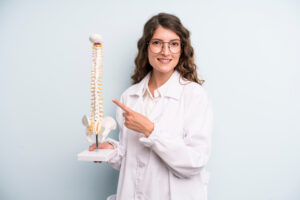

by the Female Medical Providers of Heart and Health Medical
Exceptional Medical Care For The Women Of Our Community
The Women’s Health Team at Heart and Health Medical is a dedicated group of female medical providers who specialize in various aspects of women’s health. These providers have received specialized training and have a deep understanding of the unique healthcare needs of female patients.
Having a diverse and specialized Women’s Health Team ensures that female patients receive comprehensive and tailored care across different medical disciplines. This approach recognizes that women’s health encompasses a wide range of medical concerns, and having a team of female providers with expertise in these areas can improve the quality of care and patient experience.
The Women’s Health Team at Heart and Health Medical is committed to addressing the unique healthcare needs of women and providing them with the highest level of medical care and support. Whether it’s managing allergies, addressing hormonal issues, maintaining heart health, or addressing skin concerns, the team is dedicated to helping women achieve and maintain optimal health and well-being.

Women's Health Articles
Bone Health in Women: Preventing Osteoporosis
Bone Health in Women: Preventing Osteoporosis Bone health is a...
Read MoreSkin and Hair Changes in Women: Hormones and Beyond
Skin and Hair Changes in Women: Hormones and Beyond Hormonal...
Read MoreMenopause: Navigating the Change with Grace
Menopause: Navigating the Change with Grace Introduction to Menopause Menopause...
Read MoreBreast Health and Breast Cancer
Obstetrics: Obstetrics is the branch of medicine that deals with pregnancy, childbirth, and the postpartum period. Obstetricians are medical professionals who specialize in caring for pregnant women, ensuring the health and well-being of both the mother and the developing fetus. They provide prenatal care, monitor the progress of pregnancy, and manage any complications that may arise during pregnancy and childbirth. Obstetricians are trained to deliver babies and provide care during the postpartum period.
Gynecology: Gynecology is the branch of medicine that focuses on the female reproductive system, but it encompasses a broader range of women’s health issues beyond pregnancy and childbirth. Gynecologists are medical professionals who specialize in the diagnosis and treatment of conditions related to the female reproductive organs, such as the uterus, ovaries, fallopian tubes, and cervix. They provide preventive care, perform regular gynecological exams, and address various women’s health concerns, including menstrual disorders, contraception, fertility issues, menopause, and gynecological conditions like fibroids and endometriosis.
Contraception
Birth control, also known as contraception, encompasses a variety of methods and techniques aimed at preventing pregnancy. Birth control pills are one of the commonly used methods and work through hormonal regulation. Here’s how birth control pills, which typically contain both estrogen and progestin or progestin-only, function to prevent pregnancy:
Preventing Ovulation: Birth control pills work by suppressing the release of eggs from the ovaries, a process known as ovulation. Ovulation is a key event in the menstrual cycle where an egg is released from the ovary and can potentially be fertilized by sperm. Birth control pills contain hormones (estrogen and progestin) that help regulate the menstrual cycle and inhibit the body’s natural ovulation process.
Thickening Cervical Mucus: Birth control pills can also alter the cervical mucus, making it thicker and less hospitable to sperm. This change in cervical mucus consistency makes it more difficult for sperm to swim through the cervix and reach the egg in the fallopian tube.
Alteration of Uterine Lining: Some birth control pills, particularly those containing progestin, can affect the lining of the uterus (endometrium). This can make it less suitable for implantation, even if fertilization of the egg occurs.
By combining these mechanisms, birth control pills are highly effective at preventing pregnancy when taken correctly and consistently. It’s important to note that there are various types of birth control pills with different hormone combinations and dosages, and individuals may work with healthcare providers to choose the most appropriate option based on their specific needs and preferences. Additionally, birth control pills do not protect against sexually transmitted infections (STIs), so individuals engaging in sexual activity should consider other methods, such as condoms, for STI prevention if necessary.
Intrauterine Contraception
The Copper T Intrauterine Device (IUD) and the Levonorgestrel Intrauterine System (IUS) are both highly effective long-acting reversible contraception (LARC) methods that are placed in the uterus to prevent pregnancy. They have different mechanisms of action and durations of effectiveness:
Copper T Intrauterine Device (IUD):
- Mechanism: The Copper T IUD is a non-hormonal contraceptive. It is made of copper, which has spermicidal properties. The presence of copper in the uterus creates an environment that is toxic to sperm, preventing fertilization. It can also affect the uterine lining, making it less suitable for implantation if fertilization were to occur.
- Duration: The Copper T IUD can stay implanted in the uterus for up to 10 years, making it one of the longest-lasting contraceptive options available.
Levonorgestrel Intrauterine System (IUS):
- Mechanism: The Levonorgestrel IUS releases a small amount of the hormone progestin (levonorgestrel) directly into the uterus. Progestin thickens cervical mucus, making it difficult for sperm to reach and fertilize an egg. It also affects the uterine lining, making it less suitable for implantation.
- Duration: The Levonorgestrel IUS can stay implanted in the uterus for up to 5 years.
Both types of IUDs are highly effective at preventing pregnancy and offer several advantages, including long-lasting contraception, convenience, and reversibility upon removal. The choice between the Copper T IUD and Levonorgestrel IUS may depend on individual preferences, medical history, and specific healthcare recommendations. It’s important for individuals considering an IUD to consult with a healthcare provider to determine the most suitable option for their needs.
Hormonal Methods
These are various forms of hormonal contraceptives used to prevent pregnancy:
Implant:
- Description: A single plastic rod is placed in the upper arm of a woman.
- Hormone: Releases progestin.
- Duration: Effective for up to 3 years.
Injection:
- Description: Hormone injection of progestin.
- Hormone: Contains progestin.
- Duration: Typically administered every 3 months.
Combined Oral Contraceptives:
- Description: Birth control pills that contain a combination of estrogen and progestin.
- Hormones: Contain both estrogen and progestin.
- Dosage: Taken daily.
Progestin-Only Pill:
- Description: An oral contraceptive that contains only progestin.
- Hormone: Contains progestin.
- Dosage: Taken daily.
Patch:
- Description: A skin patch that releases estrogen and progestin into the bloodstream.
- Hormones: Contains both estrogen and progestin.
- Usage: Worn on the lower abdomen, upper body area, or buttocks, and changed weekly for three weeks. Not worn on the fourth week to allow for a menstrual period.
Hormonal Vaginal Contraceptive Ring:
- Description: A flexible ring inserted into the vagina.
- Hormones: Releases progestin and estrogen.
- Usage: Left in place for 3 weeks, removed for menstruation in the fourth week, and replaced with a new ring.
These methods of contraception work by altering hormonal balance to prevent ovulation, thickening cervical mucus to impede sperm movement, and affecting the uterine lining to reduce the chances of implantation. The choice of contraceptive method may depend on individual preferences, medical history, and healthcare provider recommendations. It’s essential to consult with a healthcare provider to determine the most suitable contraceptive option for one’s needs and health status.

Barrier Methods
Contraception Options: Taking Control of Your Reproductive Health
Choosing the right contraceptive method is a personal decision that depends on your unique needs and preferences. Contraception allows individuals and couples to plan when or if they want to have children, providing greater control over their reproductive health. Here are some popular contraceptive options to consider:
Male Condom: Protecting and Preventing
The male condom is a widely used and easily accessible contraceptive method. It is a thin, latex or polyurethane sheath that is worn over the erect penis before sexual intercourse. Male condoms are effective in preventing both unwanted pregnancies and the transmission of sexually transmitted infections (STIs) by creating a barrier that blocks the exchange of bodily fluids.
Female Condom: Empowering Women
The female condom, also known as an internal condom, offers women the opportunity to take control of their reproductive health. It is a soft, loose-fitting pouch with a closed end that is inserted into the vagina before intercourse. Female condoms provide a protective barrier, reducing the risk of pregnancy and STIs.
Diaphragm/Cervical Cap: Customized Contraception
Diaphragms and cervical caps are cervical barriers made of silicone or latex. They are designed to be inserted into the vagina and cover the cervix, preventing sperm from reaching the uterus. These devices require a prescription and must be fitted by a healthcare provider. They are most effective when used in combination with spermicide.
Spermicides: Enhancing Barrier Methods
Spermicides are chemical substances available in various forms, such as gels, creams, foams, or suppositories. When used in conjunction with other barrier methods like condoms, diaphragms, or cervical caps, spermicides immobilize or kill sperm, enhancing their contraceptive effectiveness.
Choosing the Right Contraception for You
Selecting the most suitable contraceptive method depends on factors like your overall health, lifestyle, sexual activity, and future family planning goals. It’s essential to have an open and honest discussion with a healthcare provider to determine the best contraception option for your individual needs.
Endometriosis
Endometriosis is indeed a challenging and often painful condition that affects many women. Your description provides a good overview of what endometriosis is and how it can impact a woman’s life. Here are a few additional points:
Symptoms: In addition to pain during menstruation, intercourse, and bowel movements, endometriosis can also cause chronic pelvic pain, fatigue, and even digestive issues.
Diagnosis: While symptoms and a clinical exam may suggest endometriosis, the definitive diagnosis typically requires a laparoscopic procedure to visually confirm the presence of endometrial tissue outside the uterus.
Treatment: The choice of treatment depends on various factors, including the severity of symptoms and the woman’s reproductive plans. Treatments range from pain management with medications (like nonsteroidal anti-inflammatory drugs) to hormonal therapies (such as birth control pills or hormone therapy) that suppress the menstrual cycle and slow the growth of endometrial tissue. Surgery, including laparoscopic excision, may be needed to remove endometrial implants and adhesions. In severe cases or when a woman no longer desires fertility, a hysterectomy (removal of the uterus) may be considered.
Impact on Fertility: Endometriosis can indeed affect fertility. However, many women with the condition can still conceive with appropriate medical management, including surgery to remove endometrial tissue, in vitro fertilization (IVF), or other fertility treatments.
Pain Management: Managing pain is a significant aspect of endometriosis treatment. Chronic pain can have a substantial impact on a woman’s quality of life, so finding effective ways to alleviate pain is a key part of the treatment plan.
It’s crucial for women experiencing symptoms of endometriosis to seek medical attention and work with healthcare providers to develop a tailored treatment plan that addresses their unique situation and goals, whether it be symptom relief, fertility preservation, or both. Additionally, raising awareness about endometriosis is essential to ensure more timely diagnosis and support for affected individuals.
Fibroids
What Are Fibroids?
Fibroids are benign growths that develop within the uterus. These noncancerous tumors originate from the myometrium, the muscular wall of the uterus, and result from the abnormal and uncontrolled growth of uterine muscle cells.
Prevalence and Impact
Fibroids are a common health concern among women, with many experiencing their development during their reproductive years. These growths can vary significantly in size, from tiny, asymptomatic nodules to larger masses that can distort the shape of the uterus.
Recognizing Symptoms
Fibroids may remain asymptomatic in some cases, causing no noticeable issues. However, when symptoms do emerge, they can be diverse and include:
- Heavy Menstrual Bleeding: Fibroids can lead to prolonged and heavy menstrual periods.
- Pelvic Discomfort: Women with fibroids may experience pelvic pain and pressure.
- Urinary Symptoms: Frequent urination can occur when fibroids put pressure on the bladder.
- Gastrointestinal Effects: In some instances, fibroids can lead to constipation.
- Backache: Back pain can be associated with fibroids.
- Infertility and Pregnancy Complications: In severe cases, fibroids can impact fertility or lead to recurrent pregnancy loss.
Diagnosis
Healthcare providers typically diagnose fibroids through pelvic examinations and various imaging studies, including ultrasound, MRI, and hysterosalpingography (HSG).
Treatment Options
The choice of fibroid treatment depends on several factors, such as fibroid size, number, location, symptom severity, and a woman’s reproductive plans. Treatment options include:
- Medications: Symptom management through pain relief and hormonal therapy.
- Minimally Invasive Procedures: Techniques like uterine artery embolization or myomectomy can remove or shrink fibroids.
- Hysterectomy: In some cases, a hysterectomy, which involves removing the uterus, may be recommended.
Fertility Considerations
Fibroids can affect fertility when they block fallopian tubes or alter the shape of the uterus. However, with appropriate medical management, many women with fibroids can conceive and have successful pregnancies.
Awareness and Support
Raising awareness about fibroids is essential, as many women may not be familiar with the condition or the array of available treatment options. Providing support and education empowers women to make informed decisions about their healthcare.
If you experience symptoms such as heavy menstrual bleeding, pelvic pain, or other issues associated with fibroids, seeking prompt medical evaluation and consultation is crucial. Healthcare providers can work with you to create a personalized treatment plan based on your unique circumstances and preferences.
Gestational Diabetes
What is Gestational Diabetes?
Gestational diabetes is a unique form of diabetes that exclusively occurs during pregnancy. It is characterized by elevated blood sugar levels, primarily due to the interference of hormones produced by the placenta with the body’s insulin regulation.
Hormonal Influence
During pregnancy, the placenta plays a crucial role in supporting the growing fetus. However, it also releases hormones that can disrupt the normal functioning of insulin, leading to a condition known as insulin resistance. This means that the body’s cells become less responsive to insulin’s efforts to regulate blood sugar levels.
Pancreatic Compensation
In many cases, the pancreas, a vital organ responsible for producing insulin, can compensate for the increased insulin resistance by producing more insulin. This compensation helps keep blood sugar levels within a healthy range, ensuring the mother’s and baby’s well-being throughout pregnancy.
Development of Gestational Diabetes
However, there are instances when the pancreas cannot produce sufficient insulin to counteract the effects of insulin resistance. When this occurs, gestational diabetes can develop, leading to elevated blood sugar levels during pregnancy.
Impact on Pregnancy
Gestational diabetes requires careful management, as uncontrolled high blood sugar levels can have adverse effects on both the mother and the developing baby. It is essential to monitor blood sugar levels regularly and make necessary dietary and lifestyle adjustments to maintain optimal health during pregnancy.
Treatment and Management
The treatment and management of gestational diabetes typically involve:
- Dietary Modifications: Creating a balanced meal plan that helps regulate blood sugar levels.
- Regular Physical Activity: Incorporating safe exercise routines into the daily routine.
- Blood Sugar Monitoring: Regularly checking blood sugar levels to ensure they remain within target ranges.
- Insulin Therapy: In some cases, insulin injections may be necessary to manage blood sugar effectively.
Post-Pregnancy Considerations
Gestational diabetes usually resolves after childbirth. However, women who have experienced gestational diabetes should remain vigilant about their future health. They are at a higher risk of developing type 2 diabetes later in life and should undergo regular screenings and adopt a healthy lifestyle to minimize this risk.
Empowering Women
Understanding gestational diabetes is essential for pregnant individuals and healthcare providers alike. By providing education and support, women can actively manage their condition, ensuring a safe and healthy pregnancy.
If you suspect or have been diagnosed with gestational diabetes during pregnancy, seeking guidance from a healthcare professional is crucial. They can provide personalized care and guidance to manage the condition effectively for the well-being of both mother and baby.
HPV
What is HPV?
Human papilloma virus is a virus that causes genital warts to grow on both the skin and mucus membranes of the genitals. There are over 30 different types of human papilloma viruses, making it is the most common sexually transmitted virus in America. However, not all of the strains lead to genital warts. In some cases, these warts can grow on the hands and even throat.
How is HPV spread? What are the signs and symptoms?
HPV is most commonly transmitted through genital contact. Even though a person is infected with this virus, the body tries to fight HPV before it can cause problems, which causes the body to show no symptoms. However, when the body does not fight off the virus, symptoms arise such as genital warts, genital itching, and vaginal bleeding.
HPV and Women
Cervical cancer is the main result of prolonged untreated HPV. Over time, the virus can attack normal cells, causing them to become abnormal. It is important for women to have yearly pap smears to check for abnormal cells growing on the cervix. Cervarix and Gardasil are two vaccines that help to protect young women from developing cervical cancer; both require 3 shots over a 6 month period.
Hysterectomy
A hysterectomy is a medical procedure in which the woman’s uterus is removed due to conditions such as uterine fibroids, uterine prolapse, endometriosis, and excessive bleeding. In this procedure, the entire uterus is removed as well as the cervix and part of the vagina. A upracervial or subtotal hysterectomy, may be performed if the conditions are less severe. During this hysterectomy, the top portion of the uterus is removed, leaving the cervix in place.
There are many different way in which a hysterectomy can be performed:
- Abdominal Hysterectomy- during this procedure, the surgeon makes an incision in the lower abdomen to reach the uterus.
- Vaginal Hysterectomy
- Laparoscopic Hysterectomy
- Laparoscopically Assisted Vaginal Hysterectomy
- Robotic-Assisted Surgery
Menopause
Understanding Menopause
Menopause is a natural phase in a woman’s life, signifying the end of her reproductive years. It typically occurs between the ages of 45 and 55, although the exact timing varies for each individual. This transformative period is marked by significant hormonal changes in the body.
Hormonal Shifts
During menopause, the ovaries gradually reduce their production of estrogen and progesterone, two vital hormones that regulate the menstrual cycle and fertility. As these hormone levels decline, it leads to various physical and emotional changes in a woman’s life.
Unique Experiences
It’s essential to recognize that menopause is a highly individualized experience. Not every woman will encounter the same symptoms or progress through menopause in the same way. While some may breeze through this transition with minimal disruption, others may face a range of challenges.
Common Symptoms
Many women experience common symptoms during menopause, which can include:
- Hot Flashes: Sudden and intense feelings of heat, often accompanied by sweating and a flushed appearance.
- Insomnia: Difficulty falling asleep or staying asleep, leading to fatigue and irritability.
- Night Sweats: Excessive sweating during the night, potentially disrupting sleep.
- Joint Pains: Discomfort or pain in the joints, which can affect mobility.
- Headaches: Recurrent headaches, which may vary in intensity.
Managing Menopausal Symptoms
While menopausal symptoms can be challenging, there are various strategies and treatments available to manage them effectively. These may include:
- Hormone Therapy: Some women benefit from hormone replacement therapy (HRT) to alleviate symptoms caused by hormonal imbalances.
- Lifestyle Adjustments: Incorporating a balanced diet, regular exercise, and stress-reduction techniques can help manage symptoms.
- Medications: Non-hormonal medications can also be prescribed to address specific symptoms like hot flashes.
Embracing Change
Menopause represents a significant life transition. While it can bring discomfort, it also marks the beginning of a new chapter. Many women find this period liberating, as they no longer need to manage menstruation or worry about pregnancy. Embracing these changes and seeking support when needed can empower women to navigate menopause with confidence.




